
 |
Festivals
Every city, town and village in Japan has at least one matsuri (festival) a year. Matsuri fall into two broad categories - smaller matsuri in rural areas, usually held in spring or autumn and based around the rice-growing cycle; and extravagant matsuri held in large towns or cities, often in summer and with a lot of interpersonal activity. In the post-war period this division has become more pronounced with the big matsuri becoming 'events' and attracting TV cameras and tourists from around the country and the world. Matsuri have their origins in ancient Shinto rituals and beliefs. Important elements include purification, offerings to the gods - such as rice, sake or fruit - and contests or games held on the day. The latter can get out of hand, even to the point of violence, but this is considered part of letting one's hair down for the day. Most community matsuri have omikoshi, or portable shrines which are carried from house to house or shop to shop to bestow good fortune on all.
For the foreign visitor, a chance encounter with a small, local matsuri can be a good time to get some nice, intimate photos. But the big festivals are always full of spectacle and sure to provide some exciting photo opportunities. Awa Odori Sapporo Snow Festival (Yuki Matsuri) - early February. Odori Park in Sapporo is the venue for an incredible array of huge and elaborate snow and ice sculptures. The festival is a major tourist attraction that brings millions of visitors from across Japan and abroad. Kamakura Festival - February 15-16th. In Yokote City, Akita Prefecture, children build kamakura - small igloos with an altar to the Shinto water gods. Hakata Dontaku Festival - May 3-4. Citizens dressed as the Seven Deities of Good Fortune parade the streets of the hakata district of Fukuoka. Kanda Festival - mid-May (every odd-numbered year). Alternates with the Sanno Festival. About 200 omikoshi are paraded to honour the deities of the Kanda Shrine in Tokyo. Sanja Festival - third weekend of May. About 100 omikoshi are paraded through the streets around Asakusa Shrine in Tokyo. There are also many geisha and other costumed participants. Sanno Festival - June 10-16th (every even-numbered year). Alternates with the Kanda Festival. Honours the deities of the Hie Shrine in Tokyo. The main festival day is June 15. Hakata Gion Yamakasa Festival - July 1-15th. A major festival that welcomes the arrival of summer in the southern city of Fukuoka sees colorful kazari-yamakasa floats paraded through the streets. Huge excitement is generated when the kaki-yamakasa are raced in the Oiyama on the final day. The festival dates back to the 13th century when a priest was carried through the city spraying holy water along the way to rid the city of an epidemic. Gion Festival - July 17th. The most significant festival in Japan. The most famous Gion Matsuri is the one sponsored by the Yasaka Shrine in Kyoto. Actually this is a one-month festival which reaches a climax on the 17th when there is a parade of giant wheeled floats called hoko or spears. These represent 66 tall spears erected in 869 in Kyoto as part of a ritual to protect the city from an epidemic. Each hoko carries a band of musicians who play a kind of music called gion-bayashi. Smaller yama or mountain floats carry life-size figures of famous people. Tenjin Festival - July 24-25th. Together with Kyoto's Gion Matsuri and Tokyo's Kanda Matsuri, this festival in Osaka is considered one of the "big three" in Japan. It is thought to date back to the mid 10th century. The main events take place in the evening on the Okawa River, involving about 100 boats and with a fireworks display providing a spectacular backdrop. Aomori Nebuta Festival - August 1-7th. Giant floats are paraded through the city of Aomori in the evening with musical accompaniment. On top of the floats are colorful, illuminated papier-mache nebuta, figures of warriors, kabuki actors or other famous people. On the last night, the nebuta are cast out to sea. This reflects the festival's origins whereby people threw paper images into the river to cast out fatigue, illness or bad luck - anything that might interfere with a successful harvest. Awa Dance (Awa Odori) - August 12-15th. In the city of Tokushima, groups of dancers follow a route along the main streets doing a variation on the Bon Odori. There is also a smaller version of the dance in Nakano, Tokyo. Nagasaki Suwa - October 7-9. Also known as O-kunchi, this festival features dragon dances and umbrella-topped floats. |
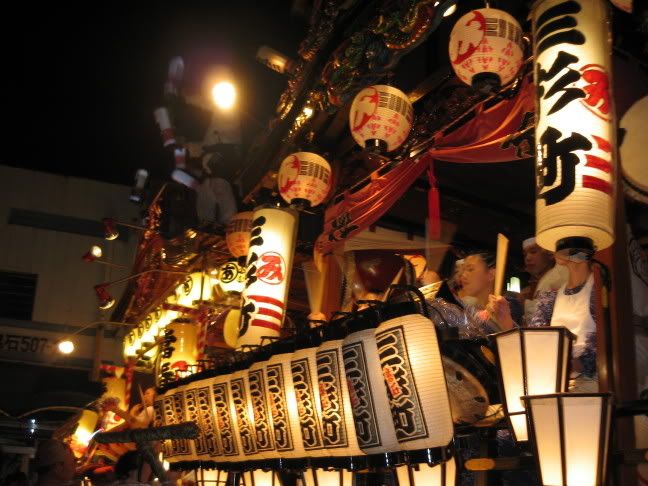 |
Awa Dance
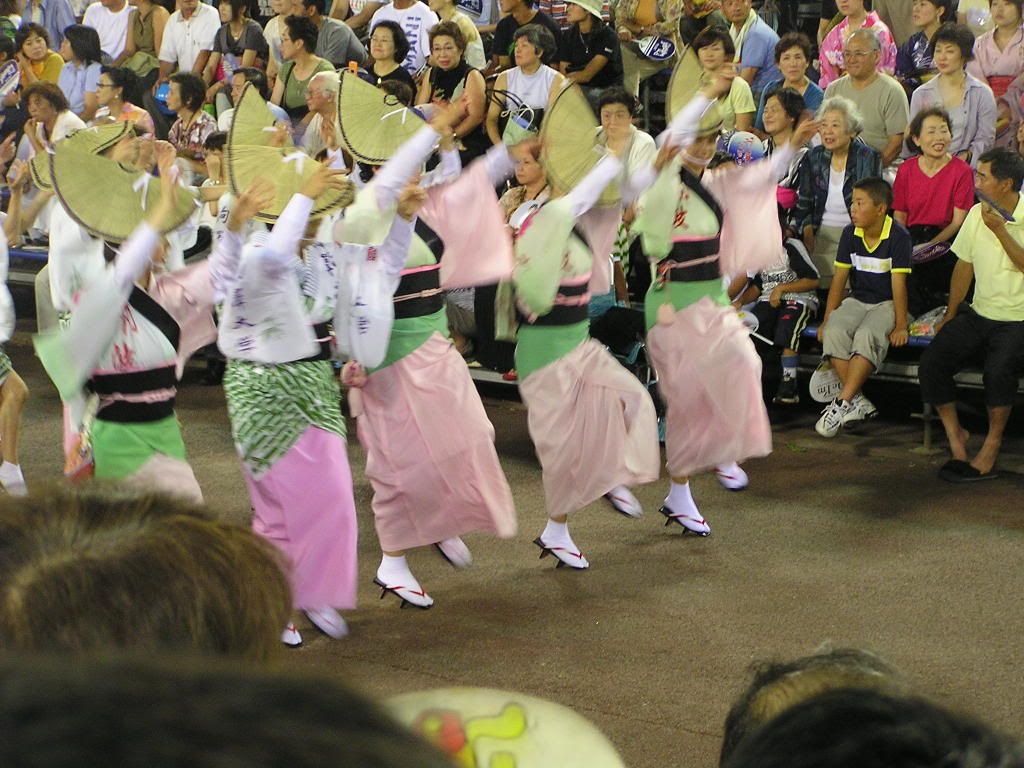 A picture of the Awa Dance Festival |
 Aomori Nebuta Festival Floatback 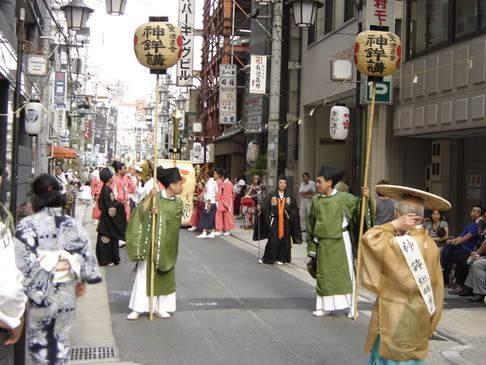 Tenjin Matsuri (festival) |
Annual Events
Although the word matsuri is always translated as 'festival', some festivals and holidays are more correctly included in the nenchu gyoji or annual events originally observed by the Imperial court. These observances are mostly of Chinese or Buddhist origin but as most Japanese don't really consider their religious significance, they also don't distinguish them from matsuri. The dates of some holidays, such as Adult's Day in January, have been moved to a fixed Monday in order to have guaranteed three-day weekends. The government made some changes in 2000 in an effort to stimulate the sluggish economy. Some of the more important days are: New Year's Day, Adult's Day (Seijin no Hi), Doll Festival (Hina Matsuri) on March 3rd, Golden Week in May, Bon Festival (Obon) on July 13-15th (August in some areas) and New Year's Eve. The birthday of the current emperor is always a national holiday, as is the birthday of the late Emperor Showa.
Mother and daughter at Shichi-go-san The New Year and Obon are the biggest events in the annual calendar. Families are expected to gather at the family home - no matter how scattered the members may be - to honour their ancestors. On the night of New Year's Eve or the next day, they visit their local shrine (in Tokyo, the number of visitors to Meiji Shrine alone is in the millions). But there are usually no wild New Year countdown celebrations. In recent years, Christmas has become a big - at least in the commercial sense - event. Couples usually try to get together for a date on Christmas Eve. At Obon, the souls of the dead are said to return and so people visit and clean the family grave and light a path to the house. Although Obon is traditionally in July, most people take their annual summer 'Obon' vacation in August, making it the busiest and most expensive holiday season. Seijin no Hi celebrates people coming of age at 20. On the second Monday of January (until 2000, it was January 15th), 20-year olds dress up and visit a shrine or attend a municipal ceremony to honour their reaching adulthood. It is a good opportunity to see hordes of young people in their finest traditional dress. Many young men wear kimono too but the majority tend to go for suits these days. Recent years have seen the day often marred by rowdy behavior and a general lack of respect for the formal aspects of the day. Setsubun on February 3rd or 4th marks the beginning of spring. The word literally means "the spliting of the seasons". People throw beans at someone wearing a mask and representing a demon and chant 'Oni wa soto, fuku wa uchi' or 'Out with the demons, in with good luck!' Often celebrities visit major shrines to throw out beans and other goodies to large crowds. The focal point for the Hina Matsuri or Doll Festival is a display of dolls representing the emperor, empress and their court in formal dress. Most homes with young girls will have a display, from simple dolls and cards to elaborate setups costing hundreds of thousands of yen. Children's Day is actually a celebration for boys, corresponding to the Doll Festival for girls. Warrior dolls or mock samurai armor are displyed and koinobori or carp streamers are flown by families with boys (the carp is considered a symbol of success). On both days a special meal is eaten. Children's Day falls during the Golden Week holiday, which along with New Year and Obon is one of the busiest holiday periods throughout the country, with millions of Japanese also traveling abroad. Tanabata Festival on July or August 7th was originally a celebration based on a Chinese legend. The stars representing the Weaver Princess (Vega) and the Cowherd (Altair) were lovers who could only meet on the seventh day of the seventh month of the lunar calendar. Its proximity to Obon meant that it became neglected in some areas but adopted by others. Sendai, for example, has a famous Tanabata Festival on August 7th. . 7-5-3 Festival (Shichi-go-san) on November 15th, 7 and 3-year old girls and 5-year old boys (Shichi-go-san is Japanese for the numbers 7,5 and 3) are dressed up in their best kimono - although these days suits are more common for the boys - and brought to the shrine to pray for their future. Originally, this ritual was based on the fact that Japanese believe certain ages to be prone to bad luck. Children were not considered fully formed until age seven. This event is also one of several times a year when photo studios make their biggest profits as parents and grandparents splash out lots of money for family albums. The full list of national holidays is as follows: January 1 - New Year's Day (Ganjitsu) The second Monday in January - Adult's Day (Seijin-no hi) February 11 - National Founding Day (Kenkoku Kinen-no hi) March 20 or 21 - Vernal Equinox (Shunbun-no hi) April 29 - Greenery Day (Midori-no hi). To be renamed Showa Day from 2007 May 3 - Constitution Memorial Day (Kenpou Kinenbi) May 4 - National People's Day (Kokumin-no Kyuujitsu). To be renamed Greenery Day from 2007 May 5 - Children's Day (Kodomo-no hi) July 20 - Marine Day (Umi-no hi) The third Monday in September - Respect-for-the-Aged Day (Keirou-no hi) September 23 or 24 - Autumnal Equinox (Shuubun-no hi) The second Monday in October - Health/Sports Day (Taiiku-no hi) November 3 - Culture Day (Bunka-no hi) November 23 - Labor Thanksgiving Day (Kinrou Kansha-no hi) December 23 - Emperor's Birthday (Tennou Tanjoubi) When a national holiday falls on Sunday, the next Monday becomes a holiday |
Foods You Could Eat
Sashimi and sushi
These two dishes are often thought to be one and the same. Sashimi consists of thin slices of raw fish or other seafood served with spicy Japanese horseradish (wasabi) and shoyu while sushi consists of the same, served on vinegared rice, but also includes cooked seafood, vegetables and egg. Another form of sushi is norimaki, or sushi roll, in which the filling is rolled in rice with a covering of nori. Cheap sushi is available at supermarkets or at kaiten-zushi restaurants, where customers sit at a counter and choose what they want from a conveyor belt. Domburimono These dishes consist of a bowl (domburi) of rice covered with one of a variety of toppings such as boiled beef (gyudon), chicken and egg (oyakodon), deep-fried shrimp (tendon) or deep-fried pork cutlet and egg (katsudon). They are often eaten as part of a reasonably priced 'lunch set', with miso soup and pickles. Tempura Seafood or vegetables dipped in batter and deep-fried, tempura is served with a dipping sauce and daikon. The word 'tempura' comes from the Portuguese 'tempero' (gravy or sauce) and this dish dates from the mid-16th century, when Portuguese and Spanish culture was first introduced to Japan. Tempura can be served with a side bowl of rice and soup or on a bowl of rice (tendon) or noodles (tempura udon, tempura soba). Sukiyaki This is a savoury stew of vegetables and beef cooked in a large nabe and dipped in a bowl of beaten raw egg. The vegetables usually used are green onion, shiitake mushrooms and chrysanthemum leaves (shungiku). Also added are tofu and gelatinous noodles (shirataki) and the ingredients are cooked in a sauce made of soy sauce, sugar and sweet cooking sake (mirin). Shabushabu For this dish, diners dip paper-thin slices of beef in a pot of boiling water and stock for a few seconds and then dip the cooked beef in sesame sauce (goma dare) before eating. Later, vegetables such as enoki mushrooms and Chinese cabbage, tofu and shirataki are added. When cooked, these are dipped in a soy and citrus sauce (ponzu). After the beef and vegetables have been finished, udon can be added to the pot and eaten with the broth. Other flavorings used include crushed garlic, chives and daikon. Economical (for those with a big appetite) all-you-can-eat meals are common in Shabushabu restaurants. Okonomiyaki This can best be described as a savory Japanese pancake. Chopped vegetables and meat or seafood are mixed with batter and cooked on a griddle. Like a pancake, the okonomiyaki is flipped over and cooked on both sides. It is then topped with a special sauce and mayonnaise and sprinkled with nori and dried fish flakes (katsuobushi). Variations include adding a fried egg or soba. Yakitori Yakitori itself means broiled chicken. Various cuts of chicken, including heart, liver and cartilage are cooked on skewers over a charcoal grill. Also cooked this way at yakitori restaurants (yakitoriya) are an assortment of vegetables such as green peppers (piman), garlic cloves (ninniku) and onions (negi). They are flavored using either a tangy sauce (tare) or salt (shio). The menu will usually contain a variety of other foods as well. Yakitoriya are usually laid-back places where the food is a snack to accompany drinking. |
Rock solid postings, oh goddess of love. Now I just need to start making a must see and do list while I am here.
|
Quote:
|
economy
With the industrialization of Japan in the 19th century came the development of the so-called 'dual structure' (niju kozo). Large corporations provided lifetime employment, seniority wage systems and company-based unions to create stable working conditions which would attract the best employees. These corporations thrived by utilizing small and medium-sized companies in the zaibatsu or financial and industrial combines. An entire zaibatsu was under the control of the family running the parent holding company. The big four zaibatsu were Mitsui, Mitsubishi, Sumitomo and Yasuda, names still prominent today. Others include Nissan, Nomura and Furukawa (which included today's Fujitsu Ltd). Price discrimination against outside companies was common practice. They also exercised a lot of political influence through cash payment to parties and politicians. The smaller companies were at the mercy of the parent corporations and therefore less stable and attractive to employees. They tended to hire more women and unskilled workers, including foreigners. This trend continues to play a part in the Japanese economy.
Following World War II, holding companies and the zaibatsu system were abolished but companies remained loosely affiliated in keiretsu business groupings. As corporate funds came more from bank loans than shareholder equity, the kinyu keiretsu (a group of companies supported by the same bank; for example, the Sumitomo keiretsu) remained powerful, although lending between different keiretsu was much more common than under the old system. Following the Occupation (1945~52) and the Korean War (1950~53), Japan entered a period of unprecedented economic growth, known as the 'economic miracle'. By 1968, Japan had passed West Germany to become the No.2 market economy in the world. The government concentrated on developing, in turn, the textile, steel, shipbuilding, chemical and automobile industries. Factors such as the oil crises of 1973 and 1978, privitisation of the railways and telecommunications systems in the 80's and strengthening of the yen against the dollar affected the economy to varying degrees but it remained strong until the early 90's. Heavy foreign investment peaked at the end of the 80's with such prominent purchases as the Rockefeller Center in New York, CBS Records and Columbia Pictures. Radical social changes also took place. Between 1950 and 1970, the number of people living in cities increased from 38 to 72 percent. Pollution became a serious problem that was largely ignored until the late 1960's. Universal social welfare was only introduced in 1970. But despite the changes and economic growth, the distribution of income remained even and no underclass developed. The changing economic dynamics and deregulation of the 90's have had a profound effect on the financial system in Japan as well as distribution and employment trends. The discovery of payments by banks and securities firms to corporate racketeers forced regulators to impose severe punishments and led to the collapse of Yamaichi Securities, one of the 'Big Four' securities companies, in the mid-90's. Major banks merged, went bankrupt or were bought by foreign companies. Late 2000 - early 2001 saw the formation of four so-called 'megabank' groups. Mizuho Holdings, Sumitomo Mitsui Banking Corp, United Financial of Japan (UFJ) Group Holdings, and Mitsubishi-Tokyo Financial Group. UFJ and MTFG later merged to form MTUFG, meaning Japan's financial base was now built on three major banking groups. Foreign businesses and investment have become more and more prominent, such as the partnership between Nissan and Renault or the acquisition of the Long-Term Credit Bank of Japan (now Shinsei Bank) by Ripplewood Holdings. Deregulation allowed insurance companies, for example, to move into areas previously closed to them and encouraged increased competition. One of the most surprising developments has been the alignment of companies from previously exclusive keiretsu groups. More and more people are doing part-time work, changing jobs or starting their own companies. Unemployment figures have become an object of concern but even the record high unemployment rate of 4.9 percent in 1999 was relatively low, given that the economy had been weak for a decade. A major problem for the future, and one that is shared by other developed countries, is Japan's rapidly aging population. The last couple of years have a seen a few tentative signs of an economic recovery. Land prices in some areas, especially the major city centers, have shown increases. Employment has crept back up, though Japan now has a whole new "underclass" of part-time workers, described with words such as "arubaito" and "freeter". |
The Japanese make a lot of the fact that they have four distinct seasons - as if it was something unique to their country. Actually, the fact that the archipelago covers several climatic zones and is caught between the Asian continent and the Pacific does cause dramatic mood swings in the weather. Cold, dry winters and hot, humid summers can be found all over the world but there are certain seasonal treats that only Japan can offer and others that have their own local twist.
The snows of winter are eagerly awaited by skiers and snowboarders, who fill popular resorts such as Hakuba and Naeba and parade the latest fashions on the slopes. Winter sports have become hugely popular in recent years and the 1998 Winter Olympics held in Nagano were hugely successful. The Yuki Matsuri (snow festival) held in Sapporo every February attracts thousands of tourists from Japan and abroad. The chilly weather takes it toll on the nation's health and it's common to see people wearing white gauze masks over their mouths. The masks are not to protect the wearer but rather to prevent others from catching the cold - very considerate. In spring, one of the best-loved symbols of Japan makes a dramatic sweep across the country. Sakura (cherry blossoms) bloom usually from the end of March through April in a kind of wave starting in southern Kyushu and working its way northeast. News reports keep the populace up to date on the best places to enjoy hanami (lit. flower viewing). The hanami tradition has been popular since the Heian Period (794~1185) and is a good example of the Japanese view of beauty in nature. The undeniable beauty of the delicate pink flowers is offset by a sense of melancholy at their all-too-brief appearance. This is often compared to our own short time spent on the earth. This mixture of feelings is best expressed when completely drunk, of course. And so every year, hundreds of thousands of Japanese of all ages gather beneath the pink blooms, sing karaoke, dance and drink till they fall over. Ironically, one popular hanami spot in Tokyo is the Aoyama Bochi (cemetery). Those resting under the rows of tombstones are almost forgotten as they are sprinkled with falling blossoms and the ocassional spilled beer. See our hanami page for more. Though not counted as one of the four seasons, there is enough rain in June for it to be called tsuyu (the rainy season). Ajisai (hydrangea) blooms turn a pale lilac and then a deep blue as the rain continues to fall. Japanese people seem to have a bit of a rain phobia at the best of times, judging from how quick they are to use their umbrellas, but at this time of year, trying to manoeuvre through thousands of the things is a life-threatening experience. And no sooner has the rain showed signs of easing than the thermometer and hydrometer go through the roof and the hot, humid summer is underway. In summer, temperatures get to the mid-30's in most areas and the humidity can be unbearable. Only Hokkaido is spared the worst of the extremes. At the weekend, people flock in their thousands to the beaches or to the relative cool of the mountains. Summer is also the season of matsuri (festivals) and hanabi (fireworks). The biggest festival of the year, Obon is held in August (July in some areas). The annual hanabi taikai (fireworks display) held on the Sumida River in Tokyo is hugely popular, drawing over a million and a half people every year. Started in 1733 by rival firework makers Tamaya and Kagiya, the dramatic and exhilarating explosions still draw excited shouts of 'Tamaya!' and 'Kagiya!' from the crowd. Although schools are on vacation in July and August, high school baseball teams are busy vying for a chance to represent their prefecture at the baseball championship held at Koshien Stadium in Hyogo Prefecture. The event is eagerly followed by the whole country. The end of summer and beginning of autumn sees the arrival from the Pacific of typhoons, tropical storms equivalent to hurricanes in the West. Most typhoons hit the Kyushu region first and then proceed across the country, wreaking havoc. Some of the worst typhoons have killed thousands of people. A typhoon was also responsible for sinking the fleet of the invading Mongols in the 13th century, earning itself the name kamikaze (divine wind). September is the time for tsukimi (moon viewing). Like hanami, it is a tradition dating from the Heian Period although it is not as popular today. As the weather cools in October and November, leaves begin to change color and suddenly the landscape is a dramatic palette of red, brown, orange, yellow and green. The koyo (red leaves) of late autumn are an often breathtaking sight, especially against a backdrop of Mt Fuji or a temple in Kyoto. |
The kimono, which literally means "clothing", is one of the world's instantly recognizable traditional garments. Thanks to the popularity of ukiyo-e woodblock prints in the West at the beginning of this century, the kimono-clad maiden became one of the quintessential images of Japan. There are different types of kimono for different occasions and seasons, including those worn by men.
They are a much less common sight these days and are usually only seen worn by older women or on special occasions. Part of the reason is the cost, as a decent silk kimono will set you back the best part of a million yen. But there is also the question of how to put on the kimono and tie the obi (decorative sash), a complicated procedure that is beyond the ability of most young women. They usually have to ask their mothers to help them or take course at a kimono school. Parts of the Kimono yuki - sleeve length ushiromigoro - rear main section uraeri - inner collar doura - upper lining sodetsuke - armhole seam fuki - hem guard sode - sleeve okumi - front panel below the collar miyatsukuchi - opening below armhole sodeguchi - sleeve opening tamoto - sleeve pouch maemigoro - front main section furi - sleeve below armhole tomoeri - overcollar eri - collar susomawashi - lower lining Kimono design through the ages. From around the Nara Period (710~94), a garment called a kosode (small sleeves) was worn, first as underclothes and later as an outer garment, by both women and men. The garment became known as a kimono from the 18th century. Although much less common today than they used to be, even the short-term visitor is likely to see at least one of these elegant garments during their stay. Women wear kimono when they attend traditional arts, such as a tea ceremony or ikebana class. Girls and young single women wear furisode, a colorful style of kimono with long sleeves and tied with a brightly-colored obi (sash). Kimono made from fabric with simple geometric patterns, called Edo komon, are more plain and casual. At weddings, the bride and groom will often go through several costume changes. One of them will see the bride in a shiromuku, a heavy, embroidered white kimono and wearing an elaborate hairpiece. The groom wears a black kimono made from habutae silk and carrying the family crest, hakama (a pleated skirt) and a half-length black coat called a haori. Western suits are more common for male guests. For funerals, both men and women wear plain black kimono. With black suits being suitable for both, it's often difficult to tell whether a guy is going to a wedding or a funeral except that they wear a white tie for weddings and a black tie for funerals. On January 15th, 20-year olds celebrate their coming of age. Most women wear an elaborately-colored komono, often with a tacky fur boa. Other kimono-wearing occasions include New Year, graduation ceremonies and Shichi-go-san for children. Traditionally, the art of putting on a kimono was passed from mother to daughter but these days special schools can do brisk business imparting the necessary techniques. Lined (awase) kimono, traditionally made of silk but sometimes wool or synthetic fabrics, are worn during the cooler months. The first thing put on are the tabi (white cotton socks); next the undergarments, a top and a wraparound skirt; then the nagajuban, an under-kimono which is tied with a datemaki belt; finally the kimono, with the left side over the right (right over left is only used when dressing a corpse for burial) and tied with the obi. About an inch of the haneri (collar) of the nagajuban shows inside the collar of the kimono. The loose design of the collar is to give a glimpse of the neck, considered the most sensual part of the kimono-wearing lady. When outside, zori sandals are usually worn. Light, cotton yukata are worn by men and women during the summer months and after bathing at hot spring resorts and traditional inns (ryokan). Often they are worn with geta, informal wooden footwear. Originally worn to the bath house by the upper class and made of plain white cotton, they became popular among the common people and were often stencil-dyed. Today, brightly-colored yukata are common at summer festivals and fireworks displays, particularly for young women and children. |
There are several schools of Sado, or Japanese tea ceremony, also known as Chanoyu. Tea, in this case O-cha (green tea), is as integral to culture in Japan as coffee is in the US (more so, in fact) or 'a cuppa' is in the UK. Also, its health benefits are widely touted and generally accepted worldwide. And study of the tea ceremony is still considered part of the 'proper' education of any aspiring young 'lady'. All these factors ensure that this ancient art form thrives even in modern-day Japan.
The Shokintei teahouse The earliest rituals involving tea came to Japan as a part of Buddhist meditation in the 6th century. Later, in the Kamakura Period (1185-1333), a Japanese priest named Eisai introduced tea seeds which became the source of much of the tea grown in Japan today. A century later the priest Eizon and the monk Ikkyu further promoted the tea ceremony. Shuko, a pupil of Ikkyu, became tea master to the Shogun Ashikaga Yoshimasa at whose villa (now known as Ginkakuji or the 'Temple of the Siver Pavillion' in Kyoto) the first purpose made tea room in Japan was built. The roots of today's major schools can be traced to tea master Sen No Rikyu (1522-1591). Over the course of later generations, the tea ceremony was refined and acquired a more Japanese rather than Chinese aesthetic. The sons of Rikyu's grandson Sotan founded their own schools: Ura Senke for commoners, Omote Senke for aristocrats and Mushanokoji Senke, which highly values the principle of wabi. (Wabi can be described as a moral and aesthetic principle which emphasises a quiet life free of worldly concerns). The Ura Senke school continues to thrive today and encourages cultural exchange abroad through the tea ceremony. The chaji, or tea ceremony is usually held in a cha-shitsu (tea-room). In grander times, this would have consisted of a seperate, small building set in a picturesque and tranquil corner of a traditional garden. These structures can most often be seen today in parks or castle and temple gardens. The Shokintei teahouse at the Katsura Detached Palace in Kyoto is a good example. Guests enter the tea-room through the nijiriguchi, a tiny door which forces them to crouch, thereby foregoing their worldly status. In a formal chaji many factors are considered to celebrate the uniqueness of the moment: the guests invited, the season, the calligraphy scroll hanging on the wall, the flowers on display, the utensils, the food served before the tea and so on. The chaji itself has several stages, each with a depth of meaning difficult for the outsider to grasp but ultimately based on a reverance for nature and the creation of a perfect moment in time. The following is a message from Sen Soshitsu, Ura Senke Grand Tea Master XV: "Chado, the Way Of Tea, is based upon the simple act of boiling water, making tea, offering it to others, and drinking of it ourselves. Served with a respectful heart and received with gratitude, a bowl of tea satisfies both physical and spiritual thirst. The frenzied world and our myriad dilemmas leave our bodies and minds exhausted. It is then that we seek out a place where we can have a moment of peace and tranquillity. In the discipline of Chado such a place can be found. The four principles of harmony, respect, purity and tranquility, codified almost four hundred years ago, are timeless guides to the practice of Chado. Incorporating them into daily life helps one to find that unassailable place of tranquility that is within each of us. As a representative of this unbroken Japanese tradition of four hundred years, I am pleased to see that many non-Japanese are welcoming the chance to pursue its study. This growing interest in Chado among peoples of all nations leads me to strive even harder to make it possible for more people to enter the Way of Tea." A celebrant of the tea ceremony holds a chasen (bamboo brush) used to stir and mix the tea. Other utensils used during the ceremony include: the cha-ire, a ceramic container used for the powdered tea; the kama (kettle) used for boiling water over a charcoal fire; hashi (chopsticks) made of cedar wood used for eating the simple food; the cha-wan (tea bowls) and many others. Koicha (thick tea) is served first and later usucha (thin tea). During the course of the ceremony, a kaiseki light meal, sake and higashi (dry sweets) are also served. On another note, one of the key indicators of Japan's progress (or lack thereof) in the field of gender relations is whether office ladies (OL's) are required by a given employer to make and do the rounds with the tea during the working day. It is the cause of probably the most often voiced grievance among the long list of sexist behavior engrained into Japanese corporate society. |
 Tanabata Festival |
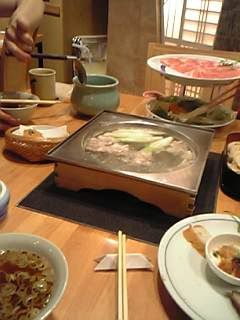 |
kimono
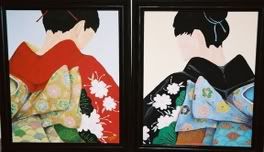 |
| All times are GMT. The time now is 01:48 AM. |